Rich Handley’s riding the Hasslein Curve into a strange, yet familiar world of great, unpublished Apes comics.An earlier look at Marvel can be found here. Malibu Graphics, here.
By RICH HANDLEY
EDITORIAL MO.PA.SA.
El Planeta de Los Simios
In 1977, Argentina publisher Editorial Mo.Pa.Sa. published a series of original Spanish-language comic books based on the Planet of the Apes TV series. Like most of the company’s titles, its Apes series was unlicensed. Thus, these tales have never been officially published in English, though fan-produced translations are available for download at potatv.kassidyrae.com/simios.html. (Full disclosure: I helped to translate the comics for that project.)
In addition to the stories presented in these issues, author Jorge Claudio Morhain wrote five more scripts that did not see print. Series artist Sergio Alejandro Mulko never illustrated most of these tales, as Editorial Mo.Pa.Sa. halted the series after only seven issues due to financial difficulties. Mulko did, however, eventually create artwork for “The Queen” two decades later, during an attempt to resurrect the series as a fan-based project that unfortunately faltered. Morhain and Mulko provided me with the script and art to “The Queen,” along with synopsis of the other four unpublished (and, to this day, un-illustrated) tales.
“The Queen”
A legendary being called the Queen of the Caves, said to be neither ape nor human, is prophesied to one day unite both species in equality. In 3085, a human named Bethia assumes the Queen’s identity in order to become the leader of a cult of humans and apes who worship the cave goddess. Fugitives Galen, Peter Burke and Alan Virdon encounter her followers when Burke becomes romantically involved with Bethia’s sister, Mariaan.
“The Killer”
A human hunter shoots apes at a school until Alan Virdon, Peter Burke and Galen risk death to stop him.
“Cain”
A human survivor, resistant to radiation, struggles to live in the ruins of New York City, which has grown decrepit from the passage of time.
“Encounter With Edison”
Thomas Alva Edison arrives from the past in a time machine of his own design. Virdon and Burke try to use it to return to their own era, but it only returns Edison home, stranding the others in the future.
“The Archeologist”
A human village, mobilized by a brainwashing device, digs up a lost civilization in New York’s John F. Kennedy Airport. As the astronauts flee, they see the Statue of Liberty, semi-buried in the sand.
—
DARK HORSE COMICS
Issue #7 and Beyond
Dark Horse’s comic based on Tim Burton’s “Planet of the Apes” remake surprised fans by surpassing the film, both in storytelling and characterization. The film’s critical failure, however, resulted in the title’s cancellation before writers Ian Edginton and Dan Abnett could bring their long-term plans to fruition. At the end of issue #6, Attar’s motley band faced the Ultimar in a bloody battle that left the revered simian assassin Keyser dead. After burying him, the others continued on their quest to find Ari—with no apparent resolution to any of the series’ continuing threads.
Had the title continued, the authors say, it would have taken the form of “an epic quest as Essau, Seneca, Crow and Attar went in search of the older Ari, who would have gradually been built up as a sort of mythic figure as the story progressed.” Attar’s grandson Kharim, anxious to dispel the dishonor Attar had brought to their family, would have continued to plague the rebels, and Abnett and Edginton planned to “use the opportunity to explore more of the world, encounter other Ape cities and so on.”
Specifically, they hoped to explore the myth of Semos, revealing how apes rose to power and how humanity reverted to intelligent, articulate primitives. William T. Quick had previously explored such questions in the novels “The Fall” and “Colony,” as did John Whitman in “Force” and “Resistance.” However, Edginton says, “I didn’t even know the novels existed until quite a while after Dark Horse had wound up the series! I think even if we had known about them, Dan and I still would have gone ahead and done the stories we had mapped out.” As such, the planet’s history as outlined by Dark Horse would have differed greatly from what Quick and Whitman had already put forth in their books.
“We would also find that there were native inhabitants of the planet—sort of that world’s equivalent of the mutants in the original movies — who are not well pleased at the apes taking over the prime ecological niche,” Edginton says. Though no design had yet been decided upon for the look and back story of these natives, the writers note, “They most certainly would have been humanoid, though — probably a product of parallel evolution. The same goes for the whole planet, which would explain how come they had horses.”
One aspect the duo intended to explore was the fates of several onscreen characters, particularly Attar, Ari and Thade. “After the events of the film,” they explain, “Attar began to question his faith following the arrival of Pericles and the evidence that the apes were once the humans’ servants, etc.” Attar’s association with Thade, now in disgrace, led to his exile as seen in previous issues. “The Ape Senate were wary of Thade’s growing ambition, and used the failure of his military expedition into the Forbidden Zone as a means of stripping him of his rank and power.” Thade vanished soon thereafter.
Ari, meanwhile, would have changed from “a middle-class, liberal, ‘hug-a-human’ animal activist into a fully fledged radical and heretic.” Like Attar, Edginton says, “she’s searching for the truth and has been on the run for years.” He was also tempted to have Daena join forces with Ari, and says, “In the 20 years or so since the events of the film, both women would have changed and matured. Ari wouldn’t be so dewy-eyed and idealistic, while Daena would have mellowed a little—she wouldn’t be so angry all the time. I’d like to think that they’d be friends, but in a sarcastic, sparring kind of way.”
Another character the duo hoped to revisit was Limbo, whom Edginton deems “too good a character to ignore.” The aged orangutan, he says, would “probably have been living a quiet life somewhere when Seneca and Essau arrive and turn his life upside down!”
Eventually, the writers say, Attar’s team would have found Ari living on a remote island among a community of human-friendly apes and the descendants of the Oberon crew. “They hadn’t stayed with the station when it crashed,” they explain, “but had ventured out to explore their new world and found somewhere safe to live, the apes not liking water. They’d also raised the rapidly evolving apes as equals.”
These humans would have been a highly technological community, having taken some of the station’s technology with them, including several space pods. Ultimately, the story would have ended with Kharim’s forces laying siege to the island, and several of the cast using the pods to escape and travel through time. “We would have found out where and when they ended up in the next series,” Edginton says.
Dark Horse founder Mike Richardson axed the Apes title after the film failed to impress, but talks soon began regarding a new series based on the classic movies. “I don’t think the idea was run by Fox,” Edginton recalls. “I think the crossing over of the Tim Burton and classic Apes movie worlds was just an idea thrown out there by Dark Horse as a possible way of keeping the comic going.”
To that end, he and Abnett looked for a way to relocate their characters from Burton’s world (known as Ashlar in the script) to Caesar’s Earth. He says he saw the “magnetic storm/spatial/temporal anomaly thing — the MacGuffin in the Burton movie” as a means to accomplish this feat. “It would send the pods skimming across time, space and parallel universes,” he states, “which is how we’d end up in the classic movie Apes world.”
Ultimately, the writers had hoped to have the story jump to an ape world similar to that seen in Pierre Boulle’s “Monkey Planet,” which Edginton describes as “a contemporary world but populated by apes, which is where they’d see the Thade version of the Lincoln Memorial. It wouldn’t have been the original Thade though —by then, the name would have become the family surname of a powerful ape dynasty, like the Kennedys or the Rothschilds.” In the end, however, “the plug was simply pulled, and that was that.”
Tarzan on the Planet of the Apes
Ever since Dark Horse Comics released its first Alien vs. Predator series, franchise crossover tales have become increasingly popular. From Archie Meets the Punisher to Freddy vs. Jason to Superman vs. the Terminator to The League of Extraordinary Gentlemen, a variety of unlikely team-ups have hit stands — and theaters — over the years. “Planet of the Apes” has gotten into the game twice: first in Marvel’s rather ridiculous “Apeslayer” saga, which merged Apes with Marvel’s War of the Worlds spinoff, Killraven; and then in Malibu’s Ape Nation miniseries, which featured an invasion by Alien Nation’s Tenctonese. Neither was overly well received.
However, had Lovern Kindzierski and Alan Weiss been allowed to pursue a project they proposed to Dark Horse, fans very well might have witnessed the first successful Planet of the Apes crossover. In 2006, the two creators pitched a tale titled “Tarzan on the Planet of the Apes” to Richardson, with Kindzierski as writer and Weiss as artist.
Had it been greenlighted, “Tarzan on the Planet of the Apes” would have seen Edgar Rice Burroughs’ iconic ape-man character propelled into the future in a time machine built by H.G. Wells, to find the planet controlled by apes. In that future, Tarzan would have befriended Nova’s tribe and encountered an ape hunting party, including a younger Dr. Zaius. One gorilla on the expedition, Phaestus, would have sympathized with the human savages and helped Tarzan protect them. Zaius, considering the ape-man a threat, would have set out to destroy him. As an added danger, Tarzan would also have had to face an angry gorilla — Alexander, leader of the hunting party — who would have ultimately been thrown back in time, to the era of Caesar’s rebellion. The comic would also have featured Tarzan encountering Theodore Roosevelt (the two had previously met in “Tarzan and the Rough Rider,” an episode of the animated series “The Legend of Tarzan”).
“This was something I talked about with [‘Revolution on the Planet of the Apes’ co-writer] Ty Templeton,” Kindzierski recalls, “and he said, ‘You know, the rights are going to be up.’ So I guess this was in 2006. Ty said, ‘Mr. Comics is just about to give up its rights to it, so maybe you can still salvage it with Richardson, if he picks up the rights again.’ So I said, hey, that would be a great thing. Mike loved the idea. I don’t know how it got shot down — I believe, from the conversation I had with Mike later, that he went to some kind of Burroughs site or chat room for fans, and the Burroughs people didn’t like it.”
NEXT: Part Four — Metallic Rose Comics
Rich Handley is the co-founder of Hasslein Books (hassleinbooks.com) and the author or co-author of six books: “Timeline of the Planet of the Apes,” “Lexicon of the Planet of the Apes,” “The Back to the Future Lexicon,” “The Back to the Future Chronology” (with Greg Mitchell) and two upcoming official Continuum episode guides (with Ed Gross). He has written numerous articles and short stories for the licensed Star Wars universe, helped edit Realm Press’ Battlestar Galactica comics and currently writes for starwars.com and Bleeding Cool Magazine. A former reporter for Star Trek Communicator, Rich helped GIT Corp. compile its Star Trek comic book DVD-ROM sets, wrote the introductions to IDW’s Star Trek newspaper strip reprint books and contributed to Sequart’s “New Life and New Civilizations: Exploring Star Trek Comics anthology.” In addition, Rich helped revise Ed Gross’s “Planet of the Apes Revisited” and has contributed to the POTA fanzine Simian Scrolls, in which an earlier version of this article appeared.

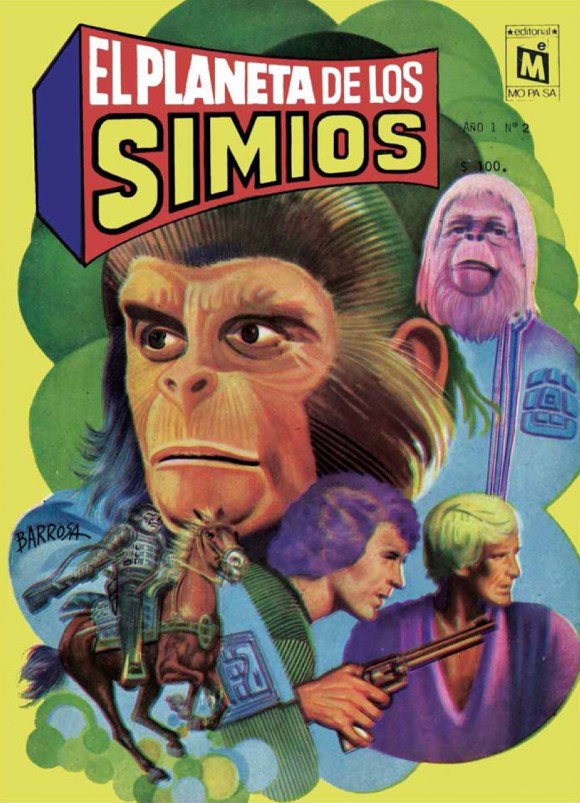
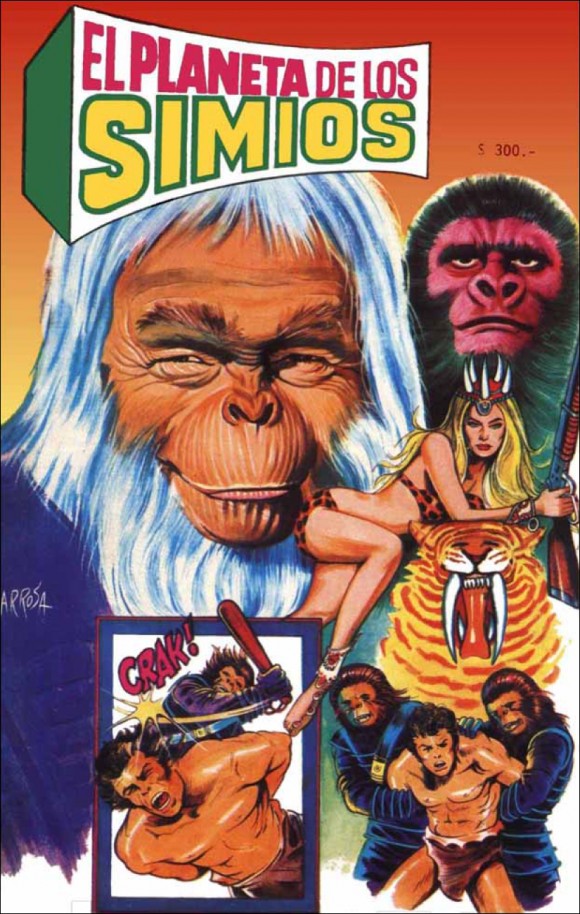
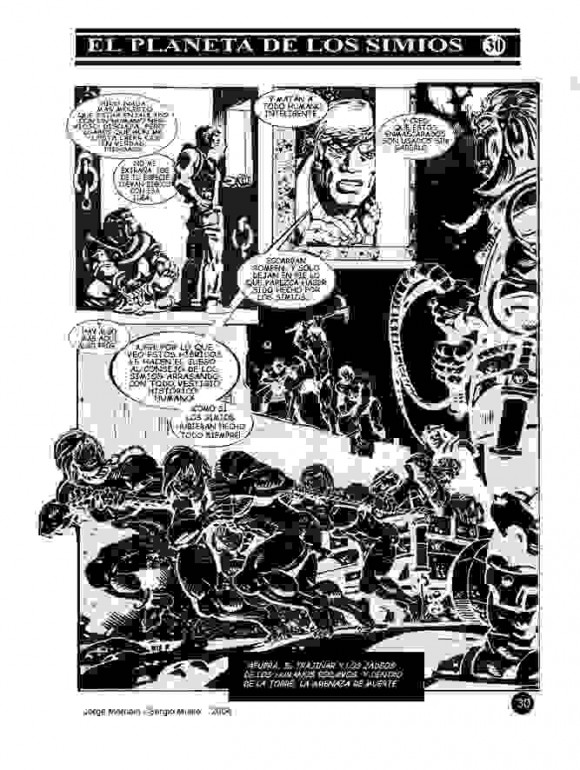

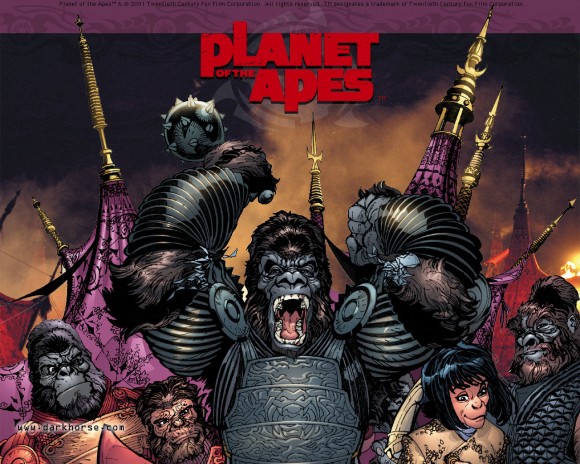
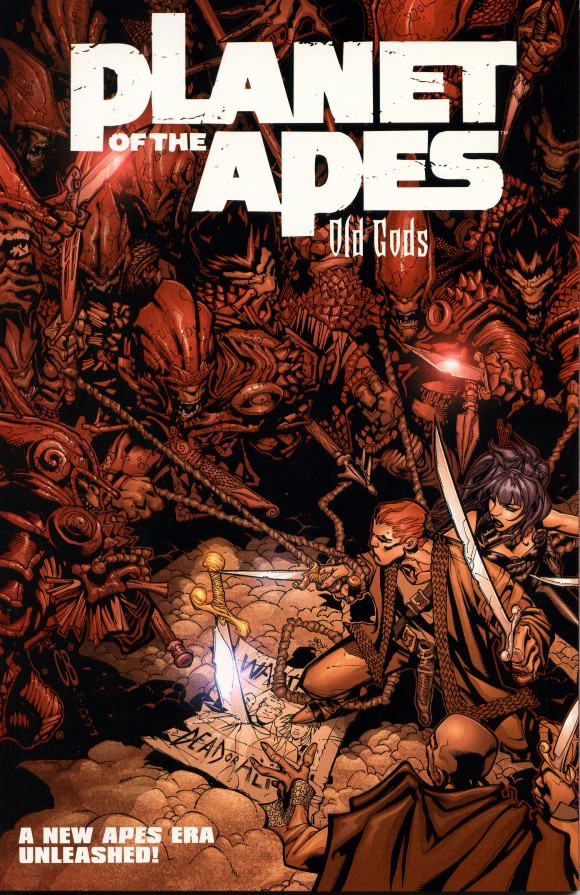
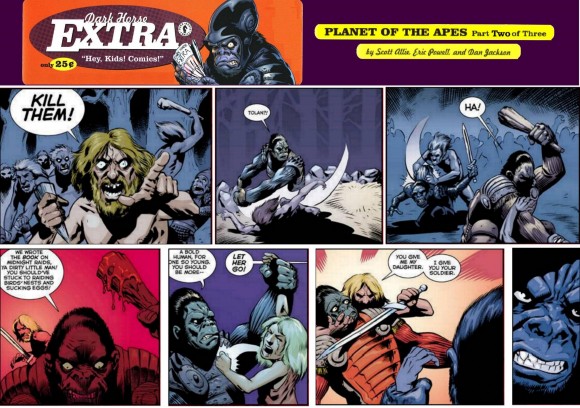
March 30, 2021
Are there any scans available of the Dark Horse Extra strips? It doesn’t look like these are available anywhere.